A number of you wrote with questions about the techniques Kazuo Onuma uses to create his mini-bonsai last week. Here are some answers!
Chojubai
Onuma grows chojubai by starting young cuttings in round, plastic containers. After several years, he removes the containers and lets the soil – red lava in this case – fall away over time.
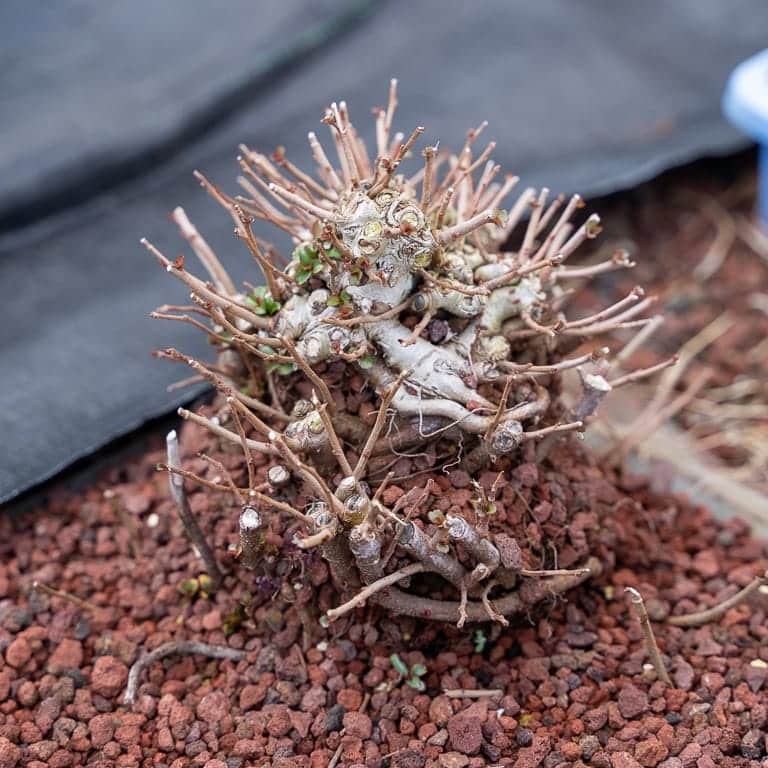
Chojubai in development
By using round plastic pots, the roots take a circular form. As the soil falls away and exposes the roots to sunlight, new shoots develop that become the tree’s primary branches.
As for the soil, Onuma prefers red lava rock (scoria) for every tree in the garden. Sometimes sharp sand was mixed in, but most of the soil was straight lava rock.
Once Onuma’s chojubai develop great trunks, he places them in colanders. As the colanders fill with roots, he stacks additional colanders or ceramic containers to give the roots plenty of space to grow. By encouraging the sacrificial roots to grow downward, the roots near the trunk remain small and in scale with the trunk.
If a small tree is planted directly into a larger container, the roots near the trunk can become coarse – an undesired result when creating small bonsai.
A ring of drainage screen (see below) is a great first “container” as it can be made in any shape or size to suit the development goals of the bonsai.
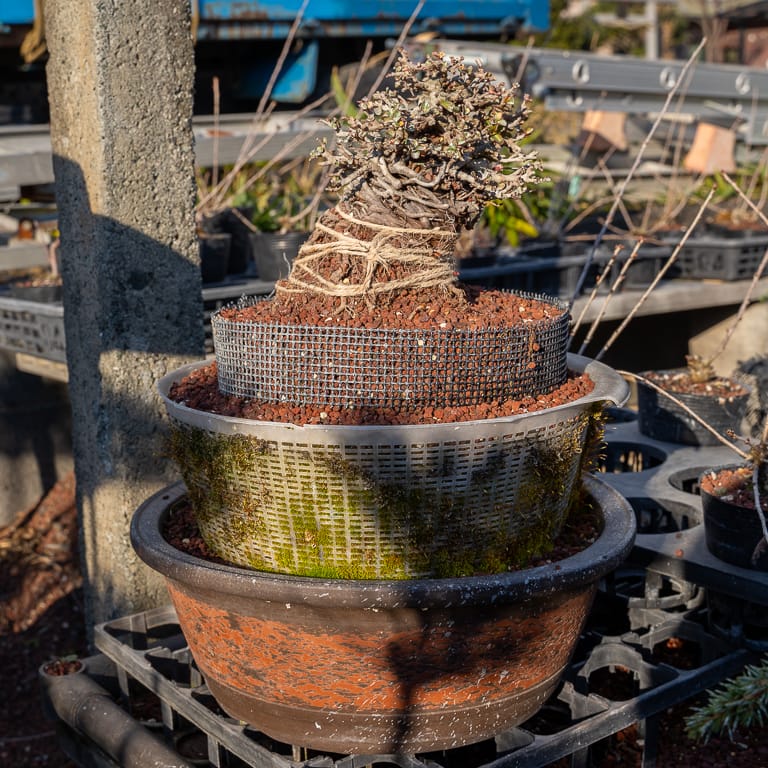
Chojubai in drainage screen above a colander above a ceramic pot
Juniper
Onuma’s junipers follow an interesting path. The first step is straightforward – he wires the trees into fantastical shapes.
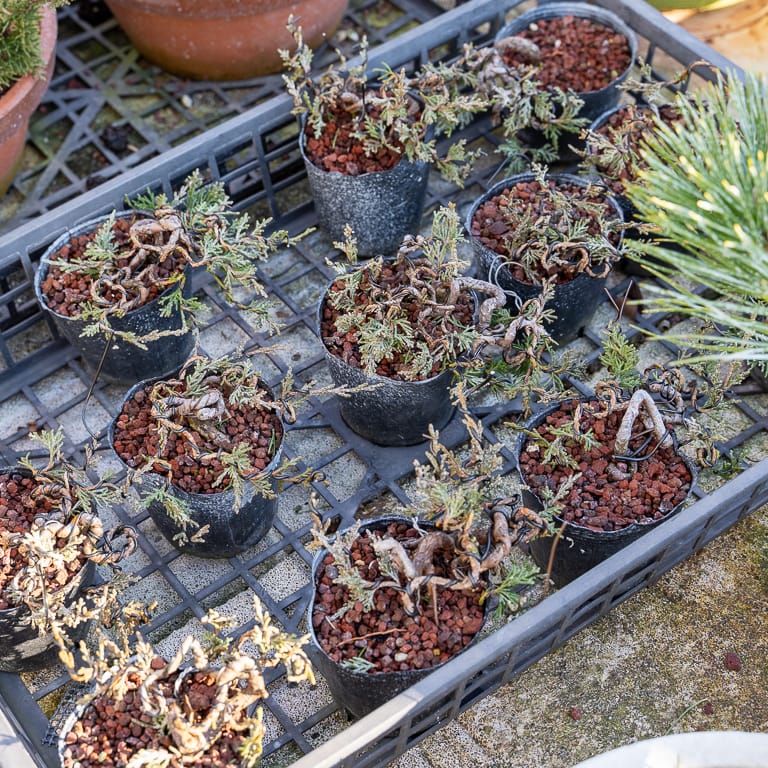
Wired junipers
The trees grow larger over time (thanks to double and triple colanders) but don’t sport interior branches as Onuma keeps the bulk of foliage at the ends of the branches.
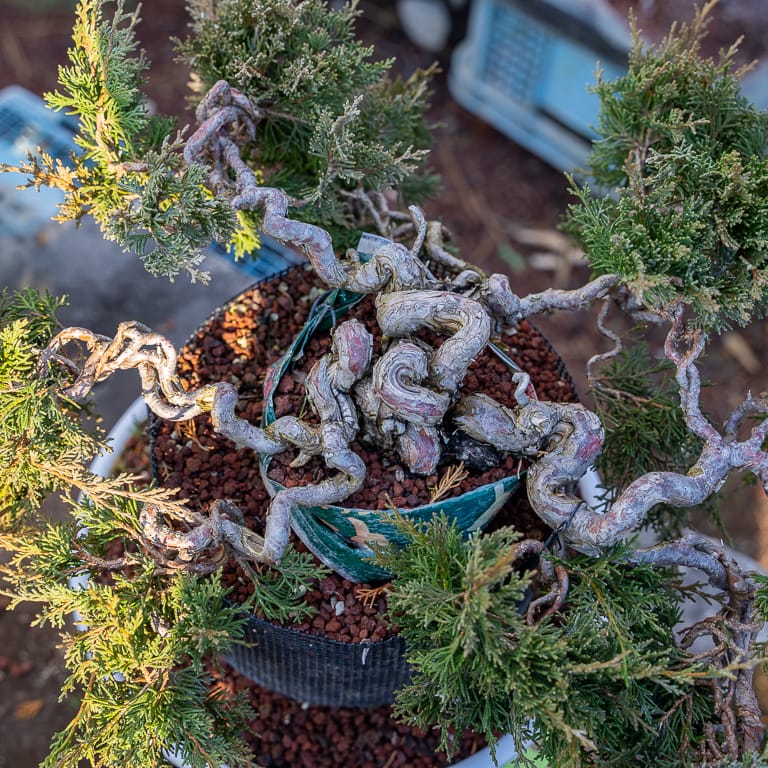
Twisty juniper branches
When the trees reach this stage, Onuma applies little wire. Instead, he braids the branches together (you can see this in the above photo towards the ends of the branches).
Braiding branches is faster than wiring and creates natural movement. Over time, the smaller branches are removed leaving the larger branches behind.
Instead of creating primary branches from these twisty starts, Onuma layers them all to create even more junipers!
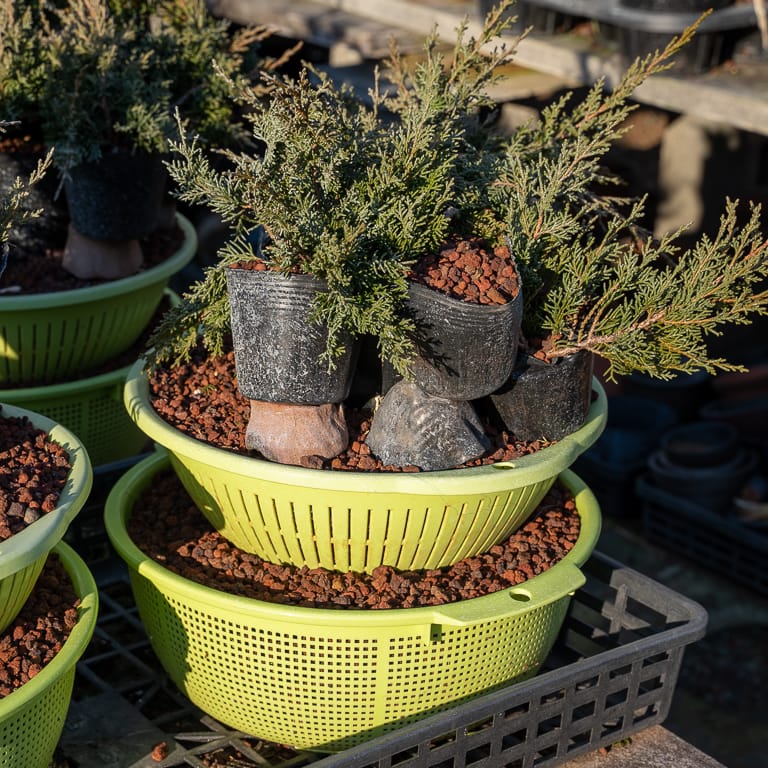
Layering twisty branches
By taking this approach, Onuma wastes nothing as even the sacrifice branches become new trees.
Japanese Maple
Onuma’s maples follow a fairly traditional development approach: let branches run for a year or two before removing them and repeating the process the following year. Here’s what this looks like.
Below is a young Japanese maple. You can see where the trunk was cut one year ago (about one inch above the ground) as the cut encouraged four new shoots to develop.
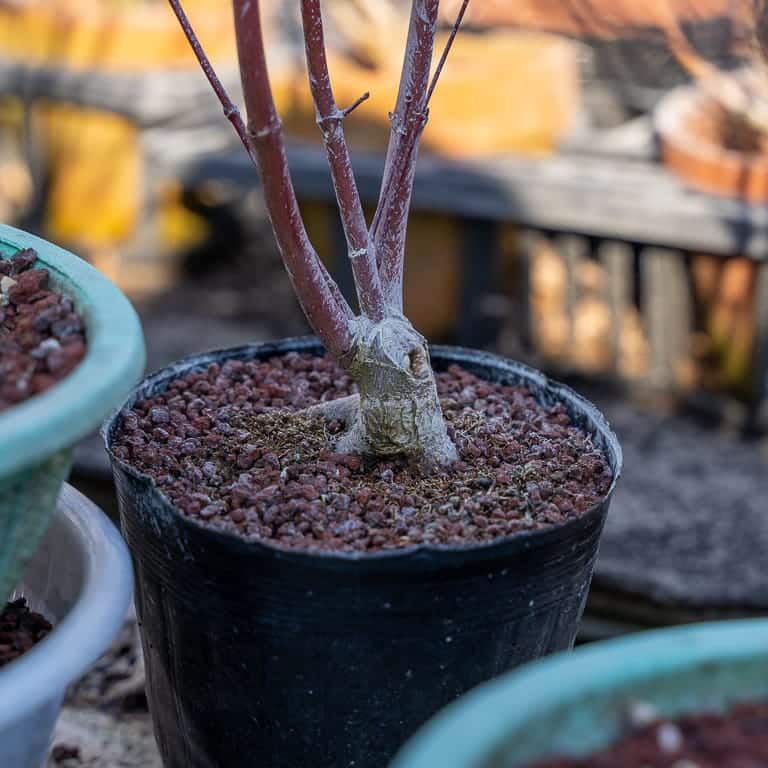
Young Japanese maple
After several years of this pruning, the lower trunk increases in size. Here’s a tree with a broad lower trunk but no significant upper trunk.
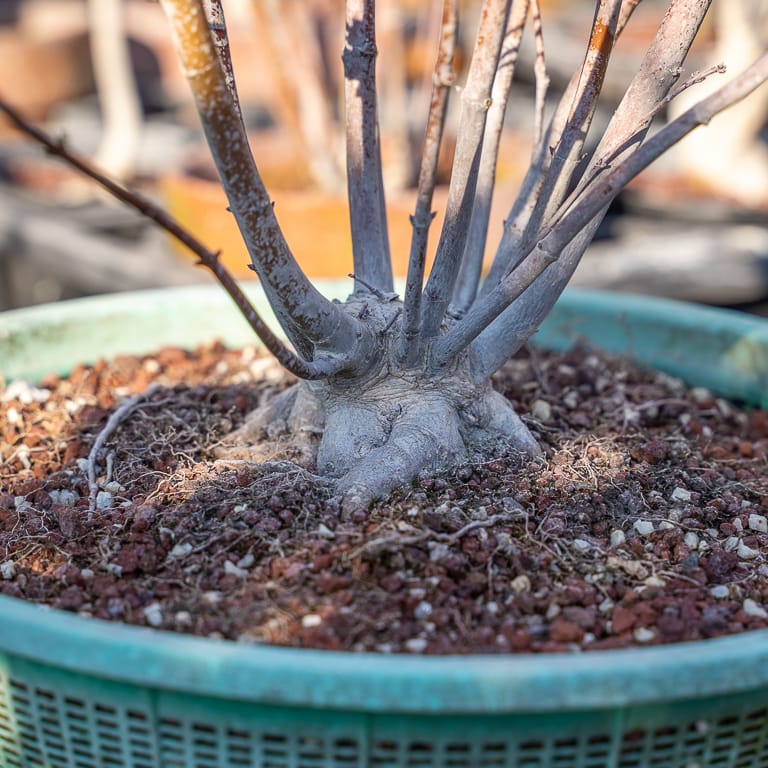
The lower trunk begins to take shape
After repeating this approach for several years, Onuma ends up with trees that look like this.
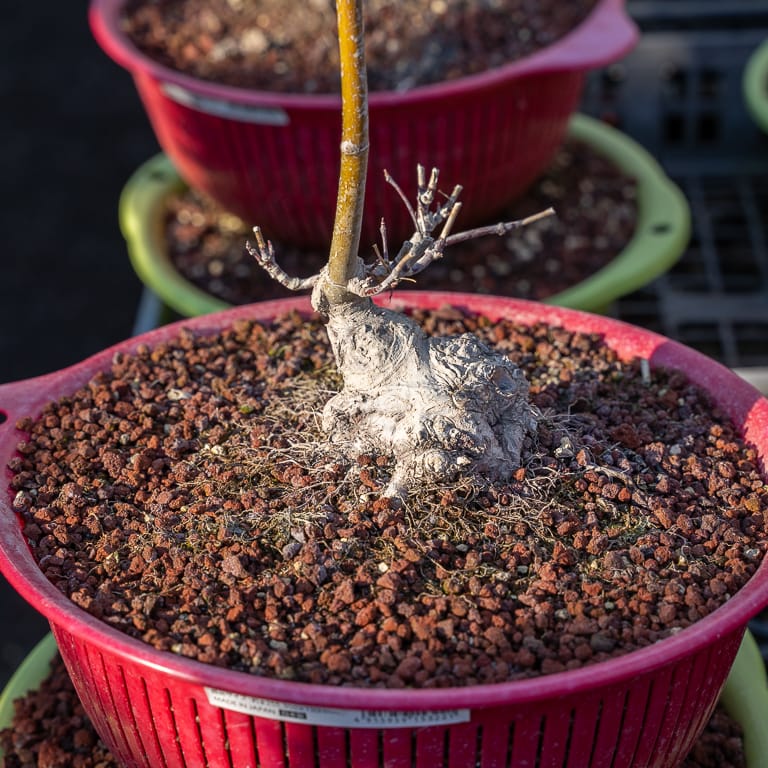
Maple with a single sacrifice branch
When most of the trunk and primary branches are in place, Onuma keeps a single sacrifice branch that he’ll eventually air-layer to create yet another tree. Here’s a maple nearing the end of the trunk development phase.
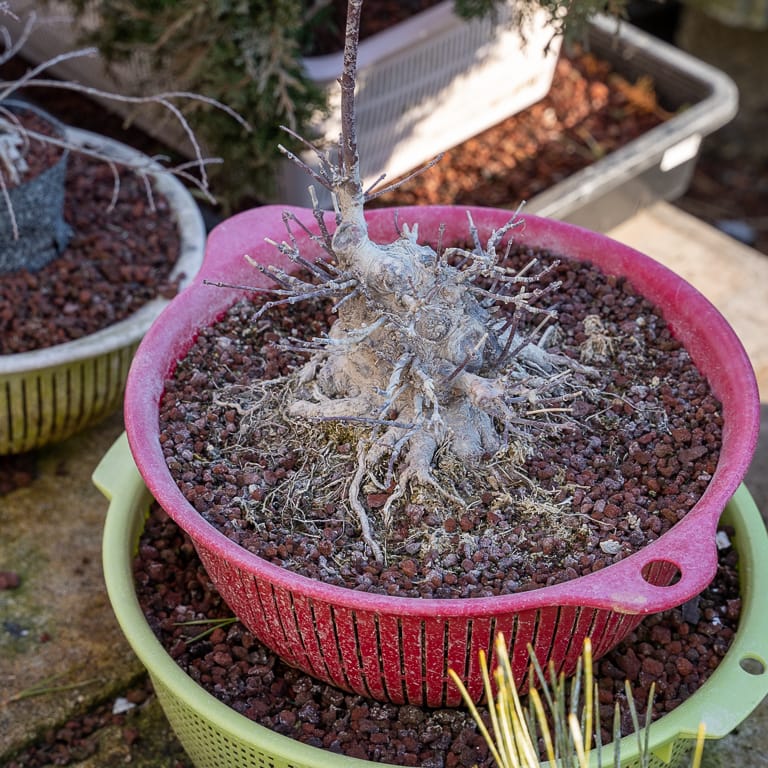
Relatively mature Japanese maple
The scars on the trunk above reveal the locations of the sacrifice branches used to form the trunk. I expect many will heal well, but I don’t know that all of the scars will vanish with time.
Onuma follows a similar approach with his trident maples from start to finish.
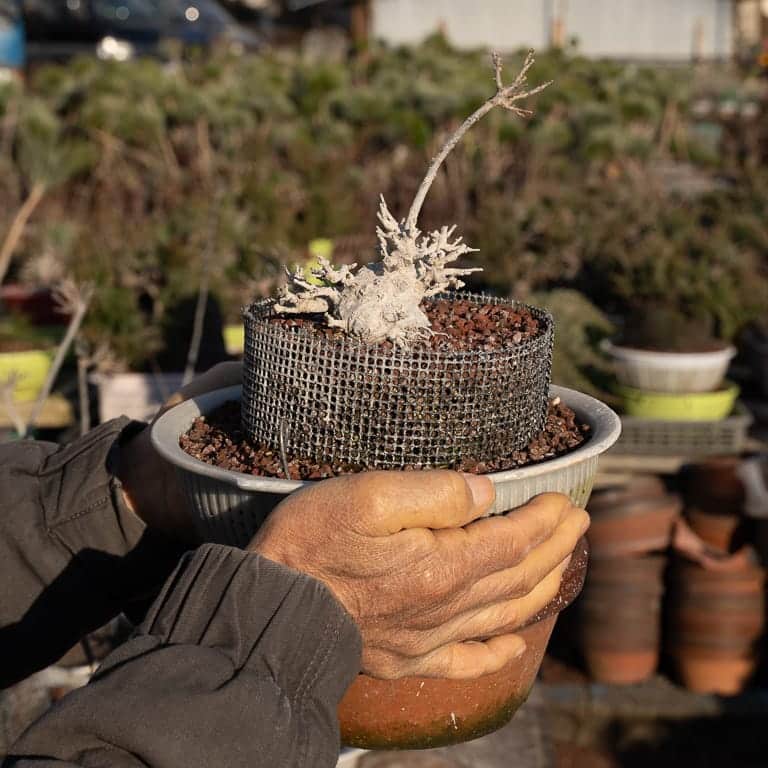
Relatively mature trident maple
This covers most of what I picked up at Onuma’s garden. If you can think of additional questions, feel free to ask them in the comments below!
Overview of Bonsai Development Techniques Published by American Bonsai Society
The current issue of Bonsai: Journal of the American Bonsai Society, features an article of mine that covers the basics of bonsai development from seed, layer, or cutting.
The article, “Making Trees from the Ground Up” (pages 6-19), identifies strategies for avoiding common problems that can prevent trees from taking the shape you want as they develop.
The best way to get a copy is to join the American Bonsai Society – a subscription to the journal is a key benefit of joining. Single issues will likely be available from the ABS bookstore in coming months.
As coincidence would have it, the issue features an image from The Little Book of Bonsai on the cover.
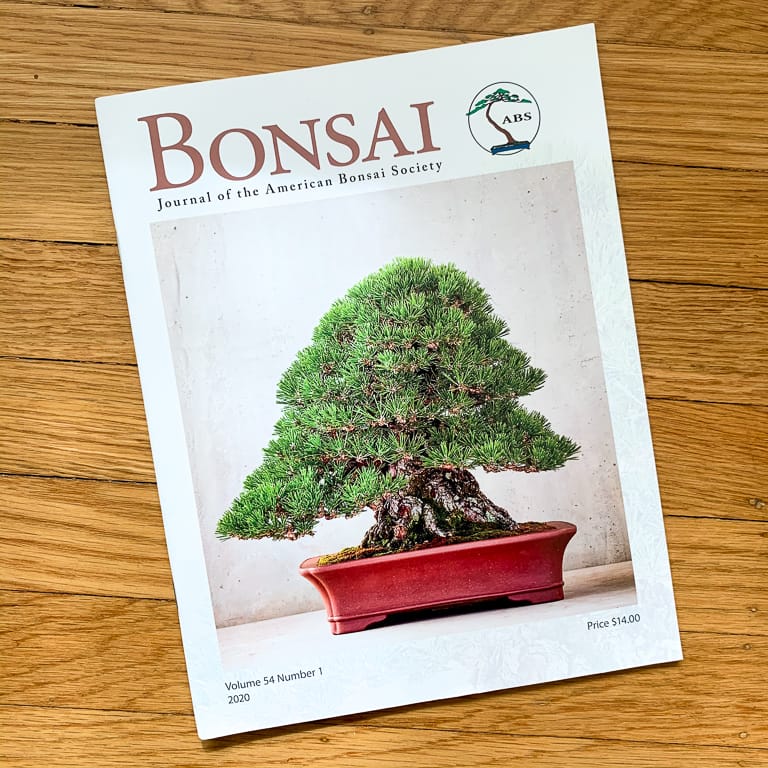
Japanese black pine – photo courtesy The Little Book of Bonsai
The post Onuma’s mini-bonsai growing techniques appeared first on Bonsai Tonight.
